Services that protect priceless works at Manchester’s John Rylands Library are the last word in modern design. But they’re based on a blueprint created 100 years ago
- Services that protect priceless works at the John Rylands Library are ultra-modern but they are based on a century old blueprint.
- A sensitive refurbishment of historic ventilation systems and the construction of a brand new wing combine to provide the best environment for a unique collection.
- Minimising plant and using water-based heating prove surprising but successful strategies for the new critical archives.
- Data on internal environment temperatures and humidity for both public and storage areas in the old and new buildings.
Built just over a century apart, the two buildings that make up John Rylands Library in Manchester could not look more different. The first is a gothic-revival masterpiece with a striking ecclesiastical tone: its massive pink sandstone bulk sculpted into ramparts, gargoyles and buttresses, all smog-blackened by a hundred years of exposure to the city’s industry.
The new structure makes reference to its predecessor in scale: its three horizontal layers echo those of the original library, but its clean lines, unadorned walls and glazed facades set it firmly within the modernist age. It is at home alongside its peers such as Manchester’s looming Beetham Tower and boxy Civil Justice Centre (BSj 08/07). But the two buildings share an important theme: both have been created as shrines to the printed word.
The new building, designed by architect Austin-Smith:Lord, was completed only a few months ago in tandem with extensive renovation of the original library, which first opened to the public in 1900. Building services engineer Gifford played an important role in the £14 million project, for which it won the contract in competition in 2001. It not only designed services for the new building, which includes archives for priceless books and photographs, but also re-engineered, and added to, the original services in the grade-I-listed historic library.
“The project has uncovered some amazing findings and created two unique spaces that will best promote the past and ensure the future of the library and its collection of precious books and manuscripts,” says Gifford project director Tim Bowden.
A widow’s might
John Rylands himself was a wealthy Lancastrian weaver. When he died in 1888 his wife Enriqueta decided to build a library to commemorate him. Mrs Rylands gathered the most renowned craftsmen and experts on library construction and book preservation. Architect Basil Champneys was commissioned to design the library, which would become one of the first public buildings in Manchester to have electric lighting.
Gifford associate John Benn, the mechanical services manager on the restoration project, says: “The building and services were state of the art for their day. There was no National Grid when the library was built; it generated its own electricity at 110V until the 1950s, using engines and generators in a big plant room.”
Designed and manufactured to Mrs Rylands’ instructions, the lighting consists of gloriously extravagant chandeliers and wall lights. After a sensitive rewiring, these fittings have all been refurbished and enhanced with the introduction of discreet track lighting.
Emergency lighting comes mainly in the form of LEDs, ingeniously hidden under handrails on the stairs and within the gratings of the ornate radiator covers that line the corridors. In the main double-height reading room, a new roof has been built over the existing structure. Emergency light fittings and smoke detection equipment has been installed discreetly to operate through the clerestory glazing and hidden apertures in the ornate ceiling.
Benn explains that the heating system is low pressure hot water, as originally designed. “The ornate wrought iron radiators have been retained but the pipework is new.” he says. “Gifford also replaced the original expansion tank, which was sited over the printed books room, with an expansion unit, ensuring that there’d be no costly leaks.”
The most innovative technological accomplishment in the old library was its ventilation system. “Mrs Rylands had travelled to America to learn how to best store books,” says Benn. “Our investigations at the start of the project found a complicated dual duct pressurized mechanical ventilation system using propeller fans. It included manual mixing of hot and cold air and a primitive carbon filtration system comprising wet gauze towels stretched over the inlet to keep out the dust and dirt as air was pulled in from outside.”
Crude intervention
In the 1970s the original 1900s plant was replaced by crude air-handling units; more recently concerns had been expressed about the quality of the internal environment of the library. Gifford’s investigations found the original ducts could be utilized in a new scheme. Benn says: “We cleaned and renovated the original hot air duct, which allowed us to pass clean air up through the large main vent grilles in the foyer and through the grilles at the base of the radiators in the principal rooms of the library.”
Gifford and English Heritage worked out that the careful consideration given to the original design of the building and its services meant they could reuse the original fresh air intake gratings at street level and the natural air path up the main stairs and through openings in the library floor and along the main body of the library.
The air-handling units were replaced by new plant with a high standard of filtration and provision for carbon filters, while the original propeller extract fans at high level in the reading room were refurbished along with the roof-level dormer discharges. New smoke-sensitive fire dampers were installed within the original plenums to ensure good fire separation between the basement and ground floor. All leaded windows were also renovated to reduce air loss.
The main library now maintains a constant internal environment of 16°C to 20°C and 40% to 60% relative humidity. Infiltration is approximately 0.5 air changes per hour and the air-handling units are sized based on one air change per hour to provide a slightly positive pressure arrangement. “The ventilation system will operate as originally intended, supplying warmed and filtered 100% fresh air to the entrance hall and reading room,” says Benn. The thermal mass of the library’s construction helps maintain steady conditions even in severe weather. It amazes me how we have been able to incorporate so much of the original services into the updated system.”
Bowden says: “This work was all carried out before we shut off the plant to the original library, which was situated in the adjacent 1970s building, in order to maintain the relative heat and humidity there. Then, when we’d secured the environment in the historic building, we could knock down the 70s block, ready to build the new critical archives and entrance building.”
The four-storey new building is clad in glass and patinated bronze – the differing materials denote different uses of the space within. The glazed ground and third floors are accessible to the public while the basement, first and third are critical archives. A glazed entrance lobby provides access to both buildings.
Here, the naturally ventilated space features coffered concrete ceilings with similar thermal mass qualities to the stonework of the original library. Swirl slot diffusers push air into the space at this level, while heat is expelled naturally through louvres high up in the adjacent atrium which connects the two buildings.
On the top floor of the new building is a reading room. Light pours into the space through the glazed facade. Here, though, a double-skin reduces solar gain and irradiance controlled blinds whirr into action if the sun shines too brightly.
Preservation strategy
This building is heavily focused on the storage and preservation of books; the reading room and critical archives are designed to provide constant close-controlled conditions as required by BS5454: 2000 Storage and Exhibition of Archival Documents.
“This space is unusual in that it has dual uses,” says Richard Quincey, Gifford’s technical director and engineer in charge of mechanical services on the new building. “The environment within the reading room is highly controllable and so if it’s not occupied the room effectively becomes another critical archive.” Sensors and controls are well hidden, an element of the design that goes intentionally unnoticed in both the new and historic parts of the project.
Hot topics
The temperature of the reading room is moderated using water-based underfloor heating, a surprising choice given that housed below are thousands of priceless books and manuscripts. However, this and each of the critical archive floors are tanked to prevent any water ingress.
Gifford took a robust holistic approach to the work, minimising the mechanical plant required and using the public areas as a buffer space to the storage areas. This approach also provides the passive environmental protection required in the event of plant or power failure.
The in-situ concrete design provides good thermal mass and air tightness, but there were concerns about drying out time. “Other buildings have been susceptible to mould growth in tightly controlled spaces when the concrete is drying out,” says Quincey. “So, as soon as the mechanical ventilation system was installed, we ran air through the critical archives constantly to assist in the drying process.” Once this was complete, the critical archives were prepared for the books. Each space is designed to maintain a constant environment: 16°C, not varying by more than +/-1°C; 50 % relative humidity, not varying by more than +/-5%; minimum fresh air of 5% to 10% (with 100% for fire-suppressing gas extract); UV screened lighting; and only two air changes per day. These conditions have to remain within tight tolerance bands for 24 hours in the event of a power failure.
The basement photographic store had an additional set of criteria for maximum pollutant levels: sulphur dioxide, 1 microgram/m3; oxides of nitrogen, 5 microgram/m3; ozone, 25 microgram/m3; carbon dioxide, 45 microgram/m3; and dust, 75 microgram/m3.
Gifford’s design has individual plant rooms for each critical archive space: only small nitrogen-based gas chillers were required due to the low loads. The photographic store uses a desiccant system to get down to the required temperature because a water-based plant was not sufficient. Fresh air and exhaust air acoustic plenums and louvres are mounted away from sources of pollution and heat. A mixing box with close control dampers with Inergen extract bypass, coarse and fine supply air filters and standard size carbon filters were installed alongside low noise supply and extract fans and an electric steam humidifier.
“We designed the critical storage area systems to ensure sufficient airflow for good mixing and penetration throughout each store,” says Quincey. “It was paramount that there were no stagnant air spots, so we conducted a smoke test with the storage racks installed. The rooms also have a slight positive pressure to keep out pollutants and all systems are designed so that there are virtually no maintenance requirements within the storage areas.”
The result is like a cross between an ancient library – rows of old books – and the clinical environment of a space station. The atmosphere is slightly chilled compared with the naturally ventilated spaces and sound is deadened.
“Enriqueta Rylands might not have appreciated the minimal decoration of the new library building, but she’d have approved of the care that is being taken to look after her books,” says Bowden.
Credits
Services engineer: Gifford
Architect, new building: Austin-Smith:Lord
Architect, historic building: Lloyd Evans Pritchard
Structural engineer: Curtins
Project manager: Davis Langdon
Quantity surveyor: Appleyard & Trew
Main contractor: Linford
Mechanical & electrical contractor: MJN Coulston
Source
Building Sustainable Design
Postscript
Original print headline: "Rewriting history" (Building Services Journal, December 2007)










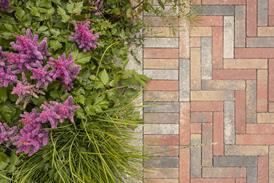
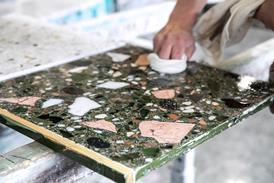
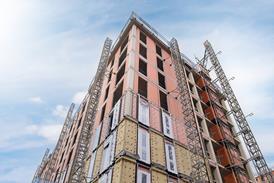

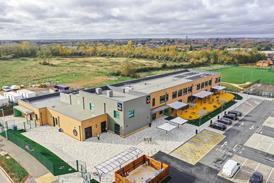


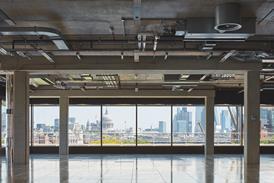
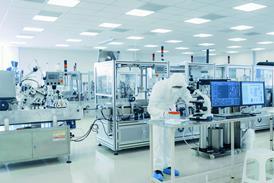
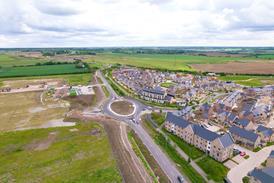
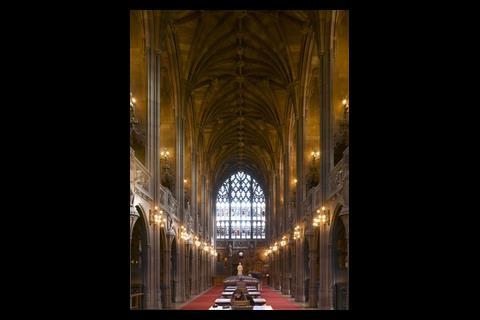
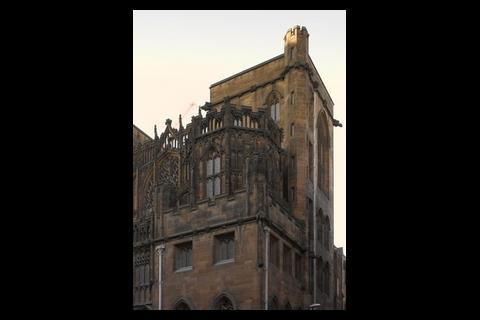
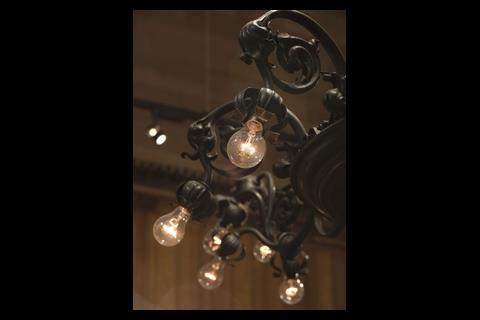
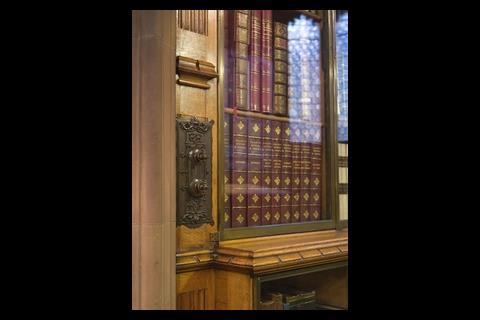
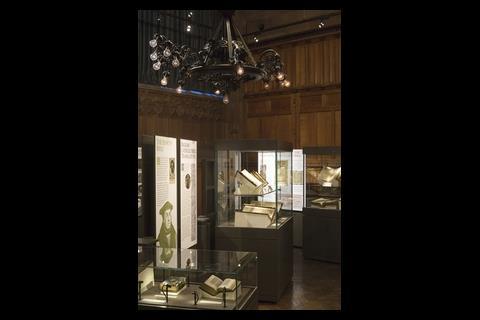
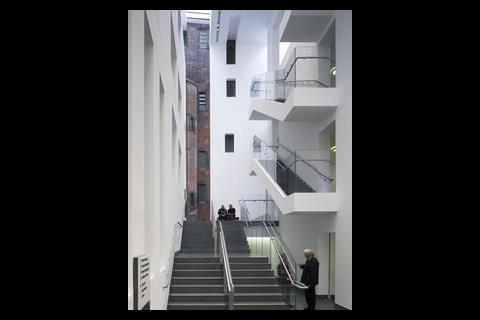
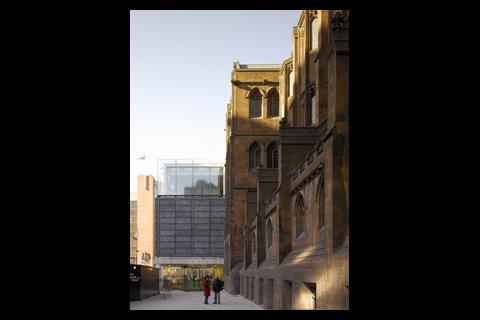
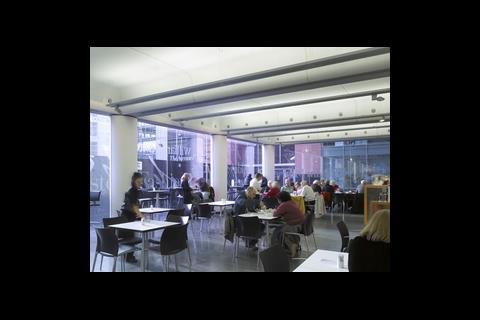
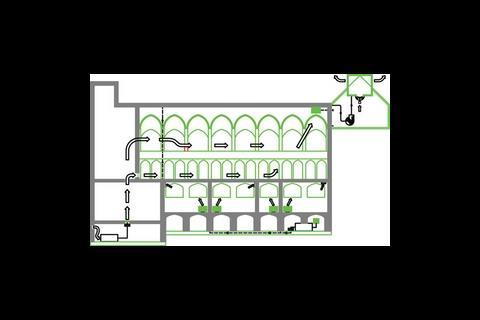
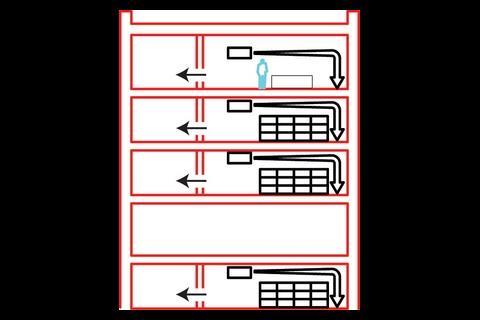

No comments yet